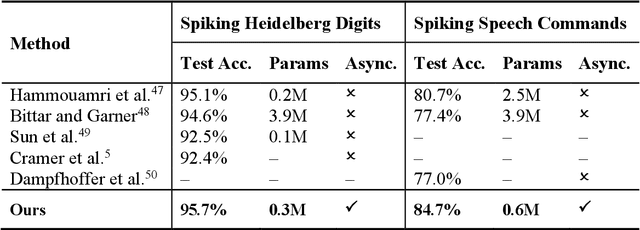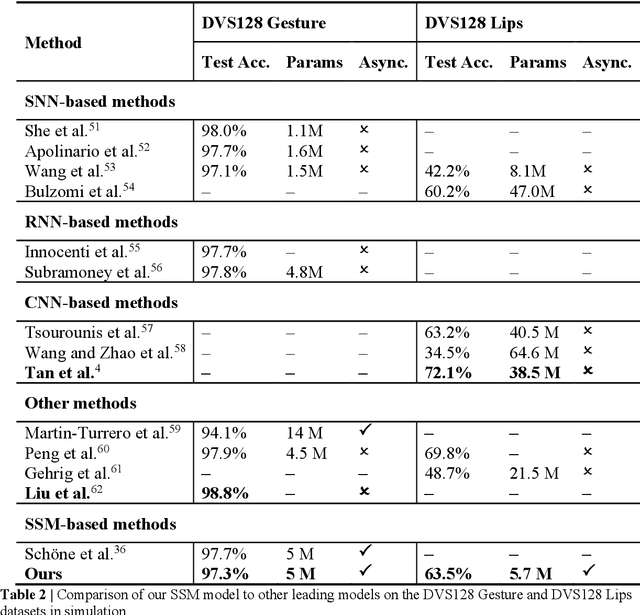Yuyang Liu
Translating Flow to Policy via Hindsight Online Imitation
Dec 22, 2025Abstract:Recent advances in hierarchical robot systems leverage a high-level planner to propose task plans and a low-level policy to generate robot actions. This design allows training the planner on action-free or even non-robot data sources (e.g., videos), providing transferable high-level guidance. Nevertheless, grounding these high-level plans into executable actions remains challenging, especially with the limited availability of high-quality robot data. To this end, we propose to improve the low-level policy through online interactions. Specifically, our approach collects online rollouts, retrospectively annotates the corresponding high-level goals from achieved outcomes, and aggregates these hindsight-relabeled experiences to update a goal-conditioned imitation policy. Our method, Hindsight Flow-conditioned Online Imitation (HinFlow), instantiates this idea with 2D point flows as the high-level planner. Across diverse manipulation tasks in both simulation and physical world, our method achieves more than $2\times$ performance improvement over the base policy, significantly outperforming the existing methods. Moreover, our framework enables policy acquisition from planners trained on cross-embodiment video data, demonstrating its potential for scalable and transferable robot learning.
Scaling Up AI-Generated Image Detection via Generator-Aware Prototypes
Dec 15, 2025Abstract:The pursuit of a universal AI-generated image (AIGI) detector often relies on aggregating data from numerous generators to improve generalization. However, this paper identifies a paradoxical phenomenon we term the Benefit then Conflict dilemma, where detector performance stagnates and eventually degrades as source diversity expands. Our systematic analysis, diagnoses this failure by identifying two core issues: severe data-level heterogeneity, which causes the feature distributions of real and synthetic images to increasingly overlap, and a critical model-level bottleneck from fixed, pretrained encoders that cannot adapt to the rising complexity. To address these challenges, we propose Generator-Aware Prototype Learning (GAPL), a framework that constrain representation with a structured learning paradigm. GAPL learns a compact set of canonical forgery prototypes to create a unified, low-variance feature space, effectively countering data heterogeneity.To resolve the model bottleneck, it employs a two-stage training scheme with Low-Rank Adaptation, enhancing its discriminative power while preserving valuable pretrained knowledge. This approach establishes a more robust and generalizable decision boundary. Through extensive experiments, we demonstrate that GAPL achieves state-of-the-art performance, showing superior detection accuracy across a wide variety of GAN and diffusion-based generators. Code is available at https://github.com/UltraCapture/GAPL
Compute-in-Memory Implementation of State Space Models for Event Sequence Processing
Nov 17, 2025

Abstract:State space models (SSMs) have recently emerged as a powerful framework for long sequence processing, outperforming traditional methods on diverse benchmarks. Fundamentally, SSMs can generalize both recurrent and convolutional networks and have been shown to even capture key functions of biological systems. Here we report an approach to implement SSMs in energy-efficient compute-in-memory (CIM) hardware to achieve real-time, event-driven processing. Our work re-parameterizes the model to function with real-valued coefficients and shared decay constants, reducing the complexity of model mapping onto practical hardware systems. By leveraging device dynamics and diagonalized state transition parameters, the state evolution can be natively implemented in crossbar-based CIM systems combined with memristors exhibiting short-term memory effects. Through this algorithm and hardware co-design, we show the proposed system offers both high accuracy and high energy efficiency while supporting fully asynchronous processing for event-based vision and audio tasks.
StreamSTGS: Streaming Spatial and Temporal Gaussian Grids for Real-Time Free-Viewpoint Video
Nov 08, 2025Abstract:Streaming free-viewpoint video~(FVV) in real-time still faces significant challenges, particularly in training, rendering, and transmission efficiency. Harnessing superior performance of 3D Gaussian Splatting~(3DGS), recent 3DGS-based FVV methods have achieved notable breakthroughs in both training and rendering. However, the storage requirements of these methods can reach up to $10$MB per frame, making stream FVV in real-time impossible. To address this problem, we propose a novel FVV representation, dubbed StreamSTGS, designed for real-time streaming. StreamSTGS represents a dynamic scene using canonical 3D Gaussians, temporal features, and a deformation field. For high compression efficiency, we encode canonical Gaussian attributes as 2D images and temporal features as a video. This design not only enables real-time streaming, but also inherently supports adaptive bitrate control based on network condition without any extra training. Moreover, we propose a sliding window scheme to aggregate adjacent temporal features to learn local motions, and then introduce a transformer-guided auxiliary training module to learn global motions. On diverse FVV benchmarks, StreamSTGS demonstrates competitive performance on all metrics compared to state-of-the-art methods. Notably, StreamSTGS increases the PSNR by an average of $1$dB while reducing the average frame size to just $170$KB. The code is publicly available on https://github.com/kkkzh/StreamSTGS.
Kunlun Anomaly Troubleshooter: Enabling Kernel-Level Anomaly Detection and Causal Reasoning for Large Model Distributed Inference
Nov 08, 2025Abstract:Anomaly troubleshooting for large model distributed inference (LMDI) remains a critical challenge. Resolving anomalies such as inference performance degradation or latency jitter in distributed system demands significant manual efforts from domain experts, resulting in extremely time-consuming diagnosis processes with relatively low accuracy. In this paper, we introduce Kunlun Anomaly Troubleshooter (KAT), the first anomaly troubleshooting framework tailored for LMDI. KAT addresses this problem through two core innovations. First, KAT exploits the synchronicity and consistency of GPU workers, innovatively leverages function trace data to precisely detect kernel-level anomalies and associated hardware components at nanosecond resolution. Second, KAT integrates these detection results into a domain-adapted LLM, delivering systematic causal reasoning and natural language interpretation of complex anomaly symptoms. Evaluations conducted in Alibaba Cloud Service production environment indicate that KAT achieves over 0.884 precision and 0.936 recall in anomaly detection, providing detail anomaly insights that significantly narrow down the diagnostic scope and improve both the efficiency and success rate of troubleshooting.
TimeRewarder: Learning Dense Reward from Passive Videos via Frame-wise Temporal Distance
Sep 30, 2025Abstract:Designing dense rewards is crucial for reinforcement learning (RL), yet in robotics it often demands extensive manual effort and lacks scalability. One promising solution is to view task progress as a dense reward signal, as it quantifies the degree to which actions advance the system toward task completion over time. We present TimeRewarder, a simple yet effective reward learning method that derives progress estimation signals from passive videos, including robot demonstrations and human videos, by modeling temporal distances between frame pairs. We then demonstrate how TimeRewarder can supply step-wise proxy rewards to guide reinforcement learning. In our comprehensive experiments on ten challenging Meta-World tasks, we show that TimeRewarder dramatically improves RL for sparse-reward tasks, achieving nearly perfect success in 9/10 tasks with only 200,000 interactions per task with the environment. This approach outperformed previous methods and even the manually designed environment dense reward on both the final success rate and sample efficiency. Moreover, we show that TimeRewarder pretraining can exploit real-world human videos, highlighting its potential as a scalable approach path to rich reward signals from diverse video sources.
Continual Learning for VLMs: A Survey and Taxonomy Beyond Forgetting
Aug 06, 2025Abstract:Vision-language models (VLMs) have achieved impressive performance across diverse multimodal tasks by leveraging large-scale pre-training. However, enabling them to learn continually from non-stationary data remains a major challenge, as their cross-modal alignment and generalization capabilities are particularly vulnerable to catastrophic forgetting. Unlike traditional unimodal continual learning (CL), VLMs face unique challenges such as cross-modal feature drift, parameter interference due to shared architectures, and zero-shot capability erosion. This survey offers the first focused and systematic review of continual learning for VLMs (VLM-CL). We begin by identifying the three core failure modes that degrade performance in VLM-CL. Based on these, we propose a challenge-driven taxonomy that maps solutions to their target problems: (1) \textit{Multi-Modal Replay Strategies} address cross-modal drift through explicit or implicit memory mechanisms; (2) \textit{Cross-Modal Regularization} preserves modality alignment during updates; and (3) \textit{Parameter-Efficient Adaptation} mitigates parameter interference with modular or low-rank updates. We further analyze current evaluation protocols, datasets, and metrics, highlighting the need for better benchmarks that capture VLM-specific forgetting and compositional generalization. Finally, we outline open problems and future directions, including continual pre-training and compositional zero-shot learning. This survey aims to serve as a comprehensive and diagnostic reference for researchers developing lifelong vision-language systems. All resources are available at: https://github.com/YuyangSunshine/Awesome-Continual-learning-of-Vision-Language-Models.
VisualTrans: A Benchmark for Real-World Visual Transformation Reasoning
Aug 06, 2025Abstract:Visual transformation reasoning (VTR) is a vital cognitive capability that empowers intelligent agents to understand dynamic scenes, model causal relationships, and predict future states, and thereby guiding actions and laying the foundation for advanced intelligent systems. However, existing benchmarks suffer from a sim-to-real gap, limited task complexity, and incomplete reasoning coverage, limiting their practical use in real-world scenarios. To address these limitations, we introduce VisualTrans, the first comprehensive benchmark specifically designed for VTR in real-world human-object interaction scenarios. VisualTrans encompasses 12 semantically diverse manipulation tasks and systematically evaluates three essential reasoning dimensions - spatial, procedural, and quantitative - through 6 well-defined subtask types. The benchmark features 472 high-quality question-answer pairs in various formats, including multiple-choice, open-ended counting, and target enumeration. We introduce a scalable data construction pipeline built upon first-person manipulation videos, which integrates task selection, image pair extraction, automated metadata annotation with large multimodal models, and structured question generation. Human verification ensures the final benchmark is both high-quality and interpretable. Evaluations of various state-of-the-art vision-language models show strong performance in static spatial tasks. However, they reveal notable shortcomings in dynamic, multi-step reasoning scenarios, particularly in areas like intermediate state recognition and transformation sequence planning. These findings highlight fundamental weaknesses in temporal modeling and causal reasoning, providing clear directions for future research aimed at developing more capable and generalizable VTR systems. The dataset and code are available at https://github.com/WangYipu2002/VisualTrans.
AsFT: Anchoring Safety During LLM Fine-Tuning Within Narrow Safety Basin
Jun 11, 2025



Abstract:Large language models (LLMs) are vulnerable to safety risks during fine-tuning, where small amounts of malicious or harmless data can compromise safeguards. In this paper, building on the concept of alignment direction -- defined by the weight difference between aligned and unaligned models -- we observe that perturbations along this direction preserve model safety. In contrast, perturbations along directions orthogonal to this alignment are strongly linked to harmful direction perturbations, rapidly degrading safety and framing the parameter space as a narrow safety basin. Based on this insight, we propose a methodology for safety fine-tuning called AsFT (Anchoring Safety in Fine-Tuning), which integrates a regularization term into the training objective. This term uses the alignment direction as an anchor to suppress updates in harmful directions, ensuring that fine-tuning is constrained within the narrow safety basin. Extensive experiments on multiple datasets show that AsFT outperforms Safe LoRA, reducing harmful behavior by 7.60 percent, improving model performance by 3.44 percent, and maintaining robust performance across various experimental settings. Code is available at https://github.com/PKU-YuanGroup/AsFT
BioProBench: Comprehensive Dataset and Benchmark in Biological Protocol Understanding and Reasoning
May 11, 2025Abstract:Biological protocols are fundamental to reproducible and safe life science research. While LLMs excel on general tasks, their systematic evaluation on these highly specialized, accuracy-critical, and inherently procedural texts remains limited. In this work, we present BioProBench, the first large-scale, integrated multi-task benchmark for biological protocol understanding and reasoning. While limited benchmarks have touched upon specific aspects like protocol QA, BioProBench provides a comprehensive suite of five core tasks: Protocol Question Answering, Step Ordering, Error Correction, Protocol Generation, and Protocol Reasoning, enabling a holistic evaluation of LLMs on procedural biological texts. Built upon 27K original protocols, it yields nearly 556K high-quality structured instances. We evaluate 12 mainstream open/closed-source LLMs on BioProBench. Experimental results reveal that while top models preform well on surface understanding tasks, struggle significantly with deep reasoning and structured generation tasks like ordering and generation. Furthermore, model comparisons reveal diverse performance: certain open-source models approach closed-source levels on some tasks, yet bio-specific small models lag behind general LLMs, indicating limitations on complex procedural content. Overall, our findings underscore that procedural reasoning within biological protocols represents a significant challenge for current LLMs. BioProBench serves as a standardized framework to diagnose these specific limitations and guide the development of AI systems better equipped for safely automating complex scientific procedures. The code and data are available at: https://github.com/YuyangSunshine/bioprotocolbench and https://huggingface.co/datasets/GreatCaptainNemo/BioProBench.
 Add to Chrome
Add to Chrome Add to Firefox
Add to Firefox Add to Edge
Add to Edge